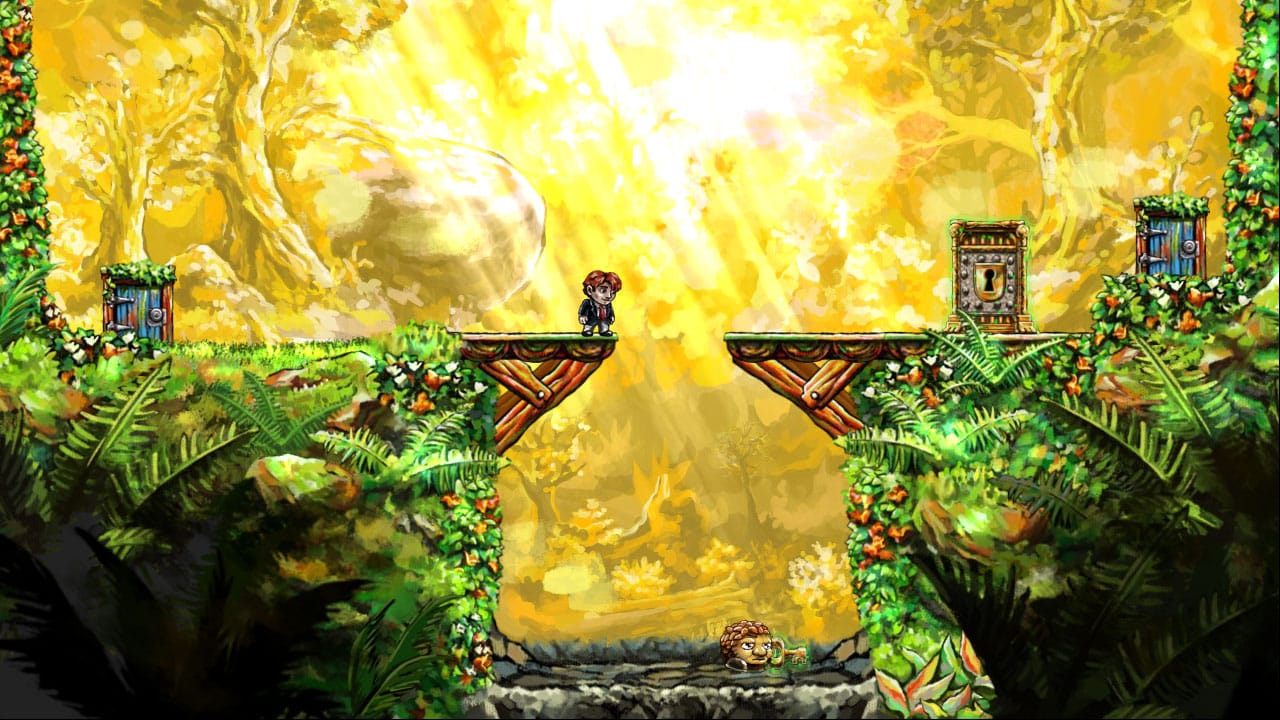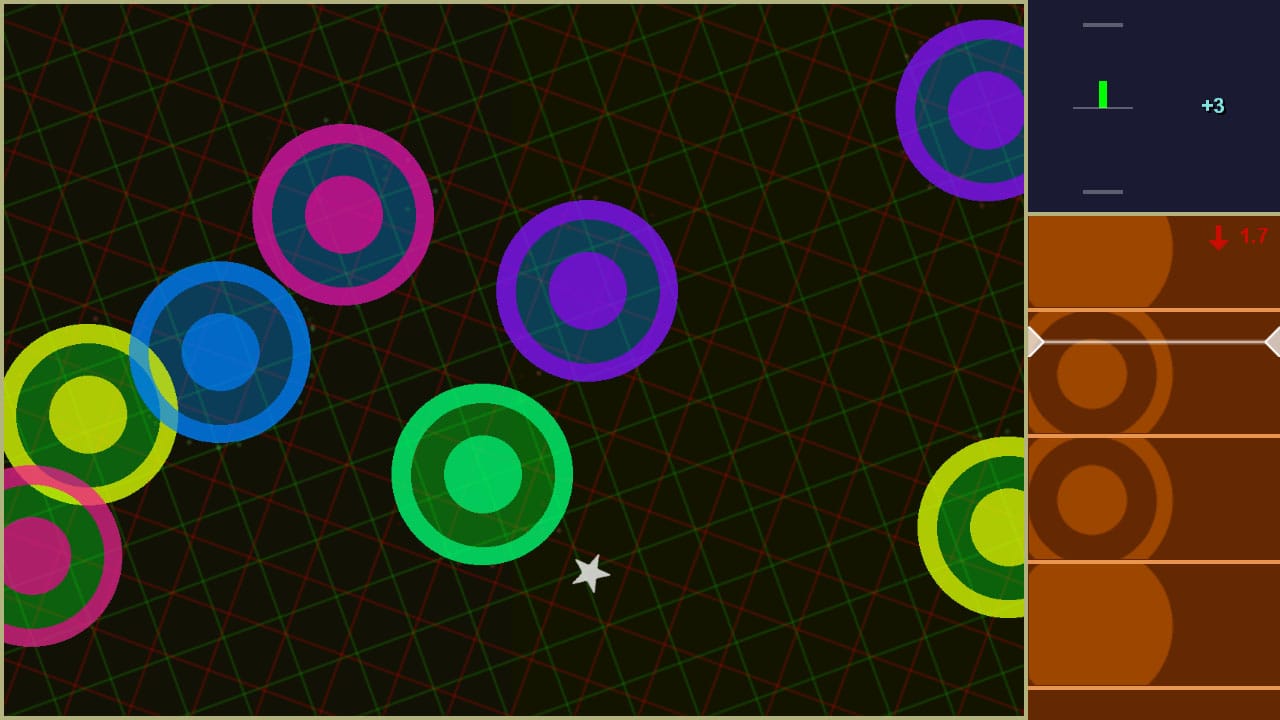Jonathan Blow’s Laboratory

A series of opaque circles flicker around a crudely rendered pool table like digital fireflies. As you choose your shot, a program simulates the aftermath, allowing brief insights into the future before you’ve even decided what to do. The game is Oracle Billiards, named after, and partly inspired by, a character from the Matrix. It’s a straightforward experiment based on a simple concept: how does seeing into a game’s future change how you play it?
Exploring the contours of that question proved difficult, however, and so the prototype was scrapped. Its creator, Jonathan Blow, had decided that the “billiard-balls-physics phenomenon was inherently too chaotic” for the line of questioning he was trying to pursue. The idea was to help players get inside the mindset of a pro by shifting the emphasis from technique and experience to strategy. The results were too messy. Being able to see the future turned out to be its own burden, at least in Oracle Billiards.
This sort of Icarian pattern runs through a lot of Blow’s earlier work. Questions are asked and experiments created that end up leading to small games which are as conceptually ambitious as they are structurally flawed.
Another of his prototypes, Painter, has players use a primitive set of graphics tools in order to create imitations of famous artworks and earn money for them based on how accurate they are. The feedback was mixed. The players who tested it at the time liked its meta-game of earning money for creating imitations. They also rated the potential to have different patrons with different aesthetic preferences that needed to be catered to. But the painting itself was tedious. What was interesting about the game’s core conceit failed to trickle down.
how does seeing into a game’s future change how you play it
Searching for this kind of continuity throughout a game’s systems has become a signature of Blow’s approach to game design. Fond of emphasizing the famous McLuhanism “the medium is the message,” Blow has spoken often about wanting to take the unique attributes of games and unify them around specific themes or ideas. Rather than let games simply be containers for the content of other mediums, like war films or science-fiction literature, his work can usually be seen as a struggle to convey human experiences in sub-verbal, sub-intellectual, deeply game-y ways.

Braid, Blow’s most famous and profitable game to date, is currently the most successful outcome of that project. Playing with recognizable game forms like platforming and collectibles, it nevertheless twisted them into something surprising, and in the end, deeply emotional. Nicewrench, an iteration on an early build of developer Messhof’s Flywrench, was another experiment of Blow’s from around the same time he was working on Braid. Written in two days, the idea was to see how making Flywrench less brutal would affect it. “How does the design change, and how do you keep the game interesting?” Blow wrote in the game notes.
Adding collectibles and eliminating death helped open the game up, making levels larger, more varied, and less conclusive. But while, in Blow’s words, “this prototype highlights some interesting gameplay situations that were not possible in Flywrench,” he felt movement in Nicewrench was too clumsy. It opened up different possibilities, but lacked interesting patterns of traversal to match them. The results were enlightening but incomplete.
it can feel possible to glimpse the vague outlines of the translation Blow was aiming for
“I’m not a very visual person,” said Blow in a recent interview with Gamasutra. “When I close my eyes and imagine things, there’s no picture whatsoever—there’s just ideas.” Perhaps nowhere is that more evident than in one of his earliest prototypes, Raspberry. “The original idea was to try and explore the way music can induce emotion,” explains Blow in the game’s readme file.
To do this, the game is split up into a number of different modes which continuously segue into one another as time moves on. One mode, for example, requires the player to accrue points by matching nodes of the same color while penalizing them if they drag the cursor over a different color in the process. Another treats the cursor like a balloon, constricted only by the borders of the frame and the particles buzzing around within it. More time spent allowing the cursor to expand in the gaps created is rewarded, while players lose points for any time spent where the cursor is contracting.
The rules are complex enough that Blow himself narrates them in the game’s tutorial. The resulting designs are bracingly minimalist, at times bumbling and slight, at others nearly harmonious. In the midst of a long play session, it can feel possible to glimpse the vague outlines of the translation Blow was aiming for with it. Asking what a song would be like if it were a game may be a quixotic goal, like asking how a sound would taste if it had flavor, but the motivation behind it, at least in Blow’s case, remains a deeply practical one.

Even with Oracle Billiards, the gaps between the idea and its execution, both visually and programmatically, yielded a moment of relief. “You can visualize the collision in your head,” wrote Blow. “But what you envision doesn’t necessarily put the balls where it says they will go. But then the collision happens, and they go right there. It feels pretty surreal.”
This friction between imagination and simulation remains a focal point throughout Blow’s work. Perhaps this is partly because of its aspiration to move beyond systems of rules governed by difficulty, risk, and reward. It’s a goal that seems inextricable from his un-visualized approach to design. It’s in these spaces, between the idea in theory and how it works and looks in practice, that Blow’s experiments have yielded their most interesting results.
In many ways, The Witness—Blow’s seven years in-the-making follow-up to Braid—is the culmination of this process. Born out of a prototyping phase in 2008, the game seems intended to recreate the sames struggles associated with experimental game design. “The game is designed to create many opportunities for epiphany moments, both small and large,” Blow told Gamasutra. The puzzles aren’t “arbitrary,” structured as scenarios for reward and punishment meant to string the player along. Instead they’re more intimate, a mirror into the same exploratory process that made the game possible in the first place.



